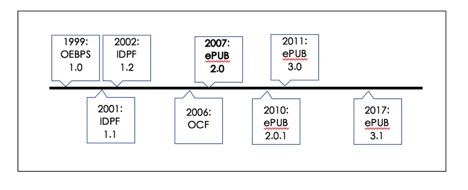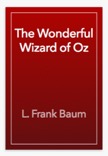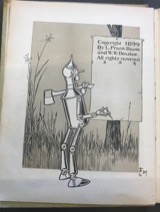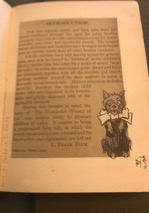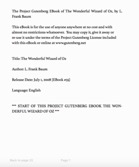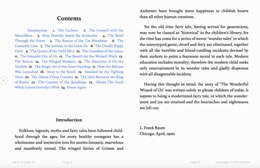EPub: Difference between revisions
| Line 24: | Line 24: | ||
==Rights and Access== | ==Rights and Access== | ||
Aforementioned, DRM is a major distinguishing feature of ePub whose purpose is to protect the rights of a content creator so that work that unique work is appreciated as such. In essence, this prevents an individual from simply going online and copying the work of others or using the work of others in a manner not approved by the creator. Two central arguments can be drawn from Digital Rights Management, one with focus on the creator of content, and one with emphasis on consumers of eBooks. | |||
The first argument is that as society at large has increasing knowledge and access to the world wide web and all of the spaces available on it, those with some form of a computer coding or data-science background hold the capability to recreate an eBook or text. Whereas, in contrast, with a physical book you must either go rent or buy the book from a store or website to receive a physical copy with an “all-rights reserved” designation, on a digital platform, one could conceivably download or use a text in a manner outside of the author’s intended permission. | |||
The second, and contradicting, argument is that by limiting access to the general public, there is an attempt to limit “user choice and innovation.” Furthermore, antagonists of DRM argue that no substantial evidence shows DRM preventing “copyright infringement” and “[keeping] consumers safe from viruses.” Today, there exist organizations such as Electronic Frontier Foundation (EFF), which aims to protect the rights of human privacy while “[preserving] fundamental rights,” and Project Gutenberg, whose mission is to “encourage the creation and distribution of eBooks” by serving as the “first provider of electronic books.” | |||
Expanding on this concept presented by Project Gutenberg and EFF, specific questions arise regarding the social aspects associated with an ePub versus a physical book. Personally, book sharing through the library and with friends remains a central part of my childhood memories. I loved visiting the librarians who knew me by name and discovering an exciting new book to learn from. With the restrictions that exist with ePub, one can no longer hand over a great read to a friend or talk to the librarian as he or she stamps the return date into a book. With DRM, this ease in accessibility and social interaction is in a sense removed, altering the dynamic one has with a book. | |||
As the notion of access as it relates to books has and continues to change as books move more and more towards the digital, one is left wondering about how far rights and access extend from concepts such as DRM. Next, we will see an example of this extension. | |||
==Conclusion== | ==Conclusion== | ||
==References== | ==References== | ||
Revision as of 19:26, 26 November 2018
TAC's ePub Page
Introduction
Books. Hardcover, paperback, scrolls...and ePub?
What is ePub?
History
Components of ePub
Materiality
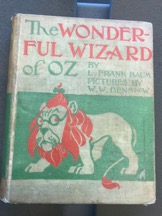
Rights and Access
Aforementioned, DRM is a major distinguishing feature of ePub whose purpose is to protect the rights of a content creator so that work that unique work is appreciated as such. In essence, this prevents an individual from simply going online and copying the work of others or using the work of others in a manner not approved by the creator. Two central arguments can be drawn from Digital Rights Management, one with focus on the creator of content, and one with emphasis on consumers of eBooks. The first argument is that as society at large has increasing knowledge and access to the world wide web and all of the spaces available on it, those with some form of a computer coding or data-science background hold the capability to recreate an eBook or text. Whereas, in contrast, with a physical book you must either go rent or buy the book from a store or website to receive a physical copy with an “all-rights reserved” designation, on a digital platform, one could conceivably download or use a text in a manner outside of the author’s intended permission. The second, and contradicting, argument is that by limiting access to the general public, there is an attempt to limit “user choice and innovation.” Furthermore, antagonists of DRM argue that no substantial evidence shows DRM preventing “copyright infringement” and “[keeping] consumers safe from viruses.” Today, there exist organizations such as Electronic Frontier Foundation (EFF), which aims to protect the rights of human privacy while “[preserving] fundamental rights,” and Project Gutenberg, whose mission is to “encourage the creation and distribution of eBooks” by serving as the “first provider of electronic books.” Expanding on this concept presented by Project Gutenberg and EFF, specific questions arise regarding the social aspects associated with an ePub versus a physical book. Personally, book sharing through the library and with friends remains a central part of my childhood memories. I loved visiting the librarians who knew me by name and discovering an exciting new book to learn from. With the restrictions that exist with ePub, one can no longer hand over a great read to a friend or talk to the librarian as he or she stamps the return date into a book. With DRM, this ease in accessibility and social interaction is in a sense removed, altering the dynamic one has with a book. As the notion of access as it relates to books has and continues to change as books move more and more towards the digital, one is left wondering about how far rights and access extend from concepts such as DRM. Next, we will see an example of this extension.
